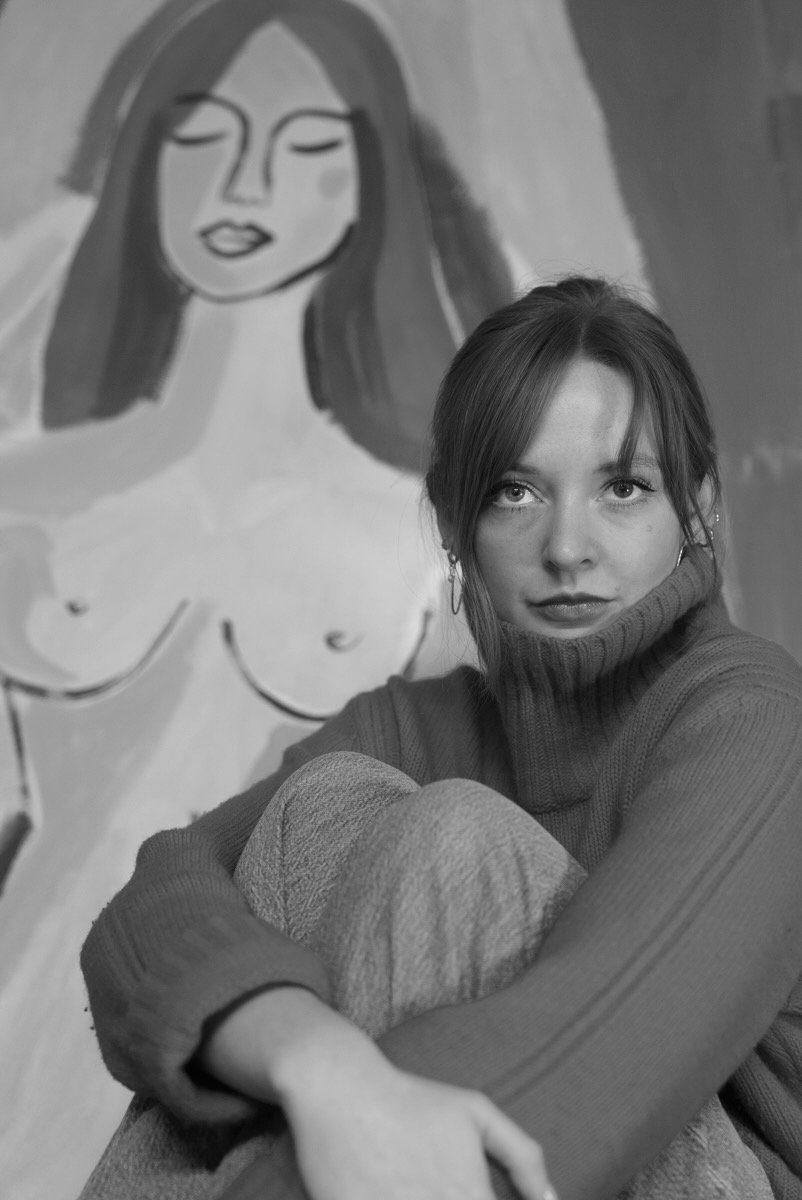Meet British Female Artist Rusty
There is something tender, honest and strong about Rusty’s depictions of other women, all captured with an attractive naivety that invites attention rather than demands it.
“When Rusty was growing up she adopted a wild baby seagull and named him Norman. As a seven year old she taught him to fly by climbing trees and then jumping from dangerous heights flapping her arms furiously and squawking it that slightly menacing way seagulls do. He often sat on her shoulder and sometimes she took him to the chippie and hung around outside waiting for the chance to swoop down and nick some chips from an unsuspecting and confused punter. Eventually Norman learnt all the survival skills needed to pursue his career as a wild seagull and with complex and mixed feelings, Norman and Rusty said their goodbyes. If I were to try and describe Rusty’s approach to painting I would probably refer back to her approach to Seagull rearing - she’s direct and expressive, she doesn’t mind stealing a bit here and there, and she approaches her subjects with warmth and a generosity of spirit. She’s also a story teller from the Hemingway lineage; show don’t tell, less says more, that kind of thing. But I’m no art critic.
We have a lot of Rusty’s work at home, and we love it equally for its’ subject matter - female portraits, plants and nudes, as for its’ thickly applied, and texturally layered paint. We have her work throughout the house and appreciate the feminine perspective on what has traditionally been subject matter approached by male artists. There is something tender, honest and strong about Rusty’s depictions of other women, all captured with an attractive naivety that invites attention rather than demands it. Most of all we love Rusty’s paintings because they look great on the wall, and that’s reason enough. She’s a lovely human too, which never hurts.”
The Story
Rusty is a fine artist born in London and currently living and working in South East London, England. Having grown up around interesting objects and paintings and with a background in textiles, Rusty found her textured, expressive painting style which explores the female gaze through gestural, decorative nudes and portraits.
Her subject matter is mostly concerned with female representation and examines how women are perceived in imagery. Art history has predominantly featured women from the male point of view, and she feels, that for women of her generation, it is important to ‘own’ how women are presented and viewed. Her work captures the lives of strong female leads, clothed and unclothed, daring and unapologetic.
About Rusty
There is something tender, honest and strong about Rusty’s depictions of other women, all captured with an attractive naivety that invites attention rather than demands it. Most of all we love Rusty’s paintings because they look great on the wall, and that’s reason enough. She’s a lovely human too, which never hurts.






